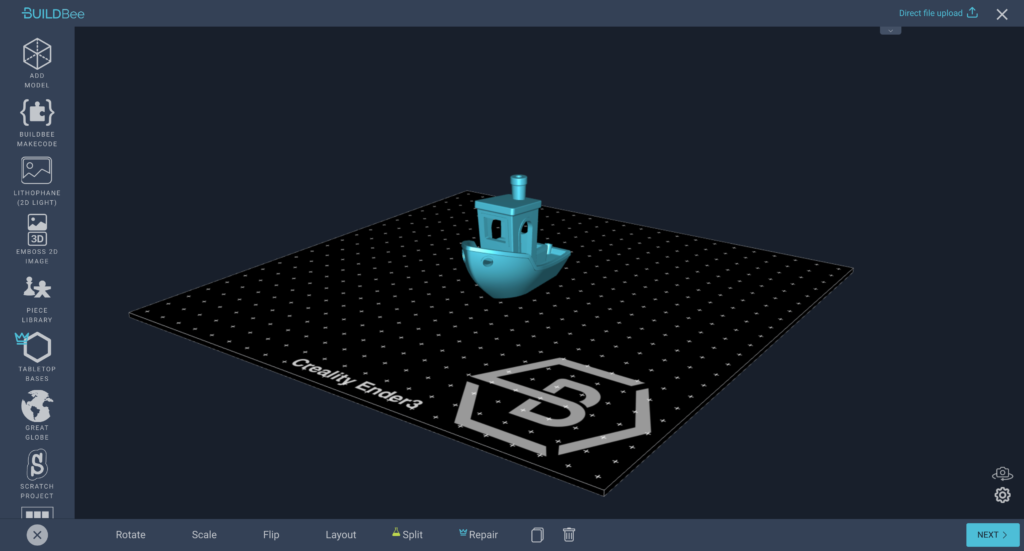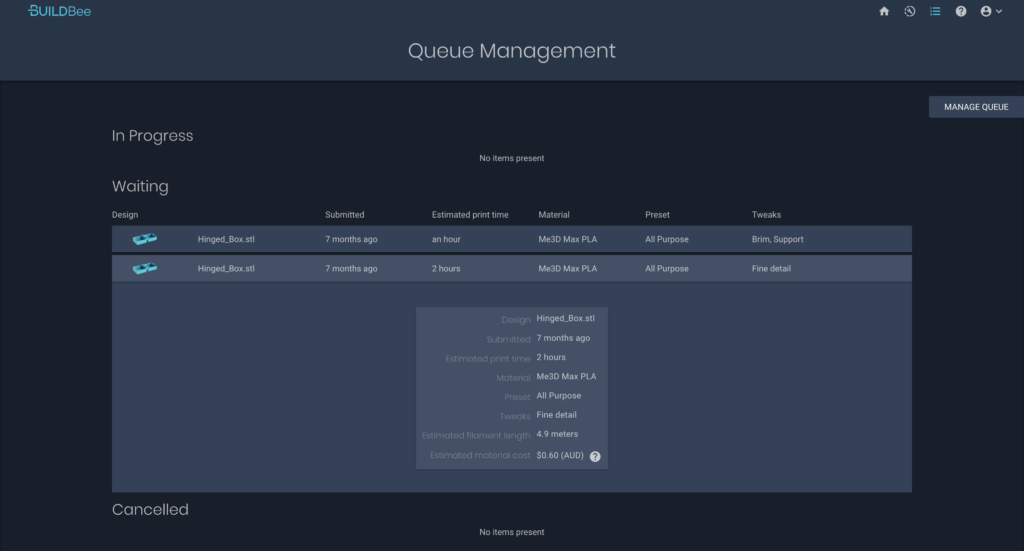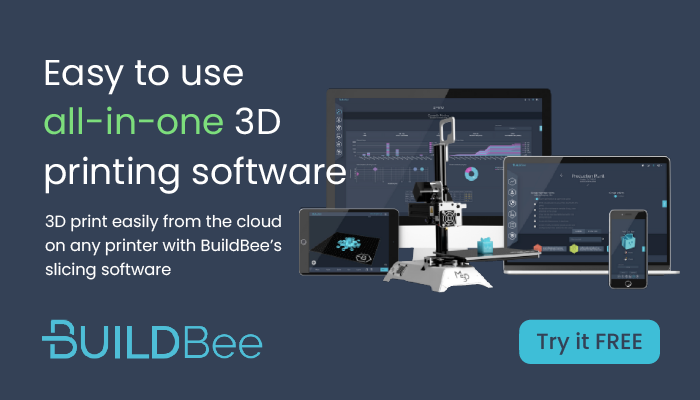
When desktop 3D printing began, slicer software was simple enough that it was more or less limited to a single task: cutting your 3D model into layers and converting that information into a toolpath that could be read by a 3D printer. Now, the technology has progressed to such a degree that there are many varieties of this previously simple tool, with users able to choose one that has all of the necessary features for their applications.
Take BuildBee, for instance. As a cloud-based slicer, it instantly offers an advantage over purely desktop options in that users can access saved files anywhere in the world at any time. You can use the Windows/Mac desktop app or a CloudDock (Raspberry Pi) to connect your printer, and use either a browser or the mobile app from the Google Play Store to use the platform securely from anywhere.
The ability to use BuildBee in the cloud and on a desktop demonstrates the overall flexible nature of the software. Aimed at all user levels, from hobbyists to businesses, the slicer has a variety of features that cater to both newer users and the more advanced. So, while it’s possible to choose an object from a library and simply prepare a model for 3D printing on your phone, you can also perform model analysis to determine printability and conduct auto-repair before running a job.
Features range from the more basic, such as resizing and rotating a model, to more advanced combining and splitting (particularly useful for 3D printing large objects in segments), as well as auto-arranging on the build plate. Users can even upload SVGs or image files to create 3D printed lithophanes. A built-in height calibration wizard prints test lines to get a sense for Z-offset calibration. And while newer users can begin with a library of 3D models to print, as well as tutorials to guide them, experts can upload custom gCode to print using experimental settings.
While slicers such as Cura will have material profiles for specific printers, BuildBee is the first that I’ve seen that has developed in-house presets for specific model types. This includes miniatures and mechanical parts, among others. In turn, the usability is greatly increased for both novices and experts, with the latter group able to start with a preset and modify where necessary.
BuildBee offers a variety of pricing plans, depending on the user type. A Free Starter plan allows for one printer and one user to store up to 20 models in their account. For $6US monthly, with a free 30-day trial, the Pro plan expands to five printers and 100 models for one user, as well as a personal queue and advanced model features.
The slicer supports a wide range of systems, such as Prusa, Creality, MakerBot, etc. Models can be designed in Tinkercad, Fusion360, or MakeCode and saved directly to one’s BuildBee account. All of this can be demoed easily by visiting the BuildBee website, where an embedded version of the software is hosted.
There, you can see just how easy the tool is to use and how absolutely clean the interface is. This is no easy feat, given the cloud connection. Where one might expect a great deal of choppiness, you can find a very smooth user experience. Honestly, BuildBee in the cloud runs more seamlessly than my desktop Microsoft Word, an interesting fact given that the slicer can be used to prep complex 3D files while my word processing software is meant only to type letters on an empty page.
Though BuildBee is comparatively new in the world of slicers, but it packs a punch in terms of usability and feature richness. The team behind it has been in the industry for some time, having established 3D printer distributor Me3D in Australia previously, and it shows in the professionalism of the platform. The startup already has over 25,000 users globally and plans to continue developing new features, with the software evolving alongside customer needs. Seeing what BuildBee has created so far, I’m excited to learn what comes next from the company.
For more information visit BuildBee.com.
Subscribe to Our Email Newsletter
Stay up-to-date on all the latest news from the 3D printing industry and receive information and offers from third party vendors.
You May Also Like
HILOS Launches Studio OS for AI-Driven 3D Printed Shoe Design
At Milan Design Week, footwear 3D printing startup HILOS has unveiled its latest development, Studio OS. Introduced at the historical Villa Bagatti Valsecchi, the platform is meant to redefine how...
3D Printing Webinar and Event Roundup: April 28, 2024
In this week’s 3D Printing Webinar and Event Roundup, the Ceramics Expo is taking place in Michigan, Stratasys continues its advanced training courses, and SPE is holding a Polymer Characterization...
Initial Speakers and Sponsors Announced for Additive Manufacturing Strategies 2025
Nearly a year away from the event, the Additive Manufacturing Strategies (AMS) 2025 conference is already beginning to take shape. Building upon the success of 2024’s summit, AMS has established...
HP & INDO-MIM Collaborate to Boost Metal 3D Printing in India
HP Inc. and INDO-MIM, a US- and India-based supplier of metal injection molding (MIM) powders and contract manufacturer, have announced that the two companies will collaborate to accelerate additive manufacturing...



































